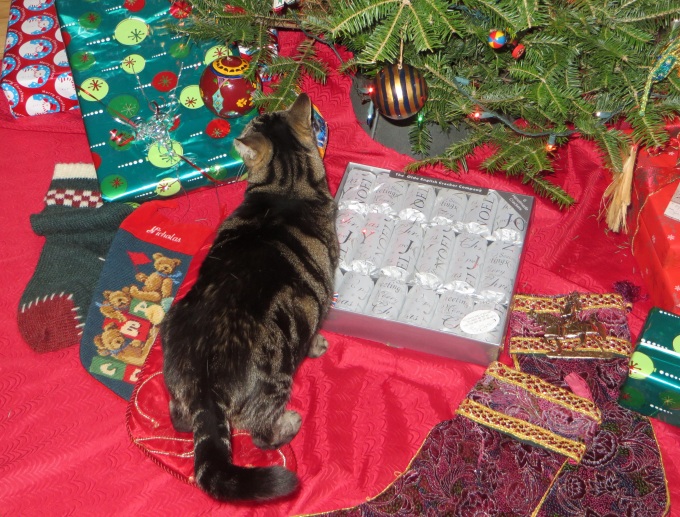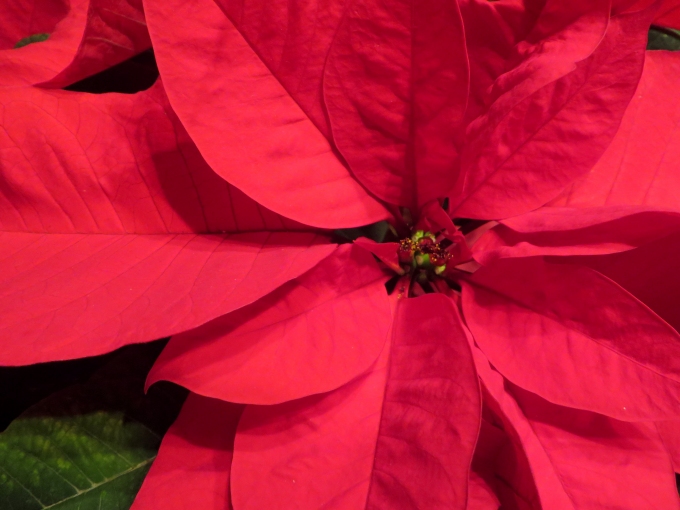Color Me Christmas
/As we're bustling around decorating and shopping for Christmas, the colors of red, green and white seem to predominate and I had to stop and think why ... although it might seem quite obvious to some of you. Considering that most of the Christmas traditions we know are derived from western and northern Europe where the winters were dark and cold, it makes sense that people would look for anything living to help remind them that Spring would eventually come. Holly, ivy and mistletoe were readily available and, of course, evergreen trees. I read that Romans traditionally exchanged evergreen branches during the winter months as a sign of good luck and the Egyptians brought green palm leaves into their homes during mid-winter holidays.

As I look out in Lin's backyard woods, there's not much color there. It's bare and bland except for the evergreens. Inside, we've got the Christmas tree and the smell of evergreen permeates the air. Tuesday, the cat, seems fascinated that we've brought some of the outside to the inside … a tree in the sun room. She sits and contemplates the tree from time to time. She's managed to remove a few ribbons from the presents, but hasn't tried climbing the tree yet, thank goodness.
We've got sprigs of holly in vases throughout the house. Those tiny red holly berries provide color and contrast to the shiny green pointed leaves. Holly has been used as a winter decoration for centuries. The Druids donned holly wreaths for traditional celebrations and holly was used as an heraldic design symbolizing truth. Holly was also the sacred plant of the Roman god, Saturn and the Romans gave each other holly wreaths at the Saturnalia festival to honor him. Holly was also used as a folk remedy for toothaches, measles and dog bites.
Then there's Santa's costume … all red and white. Evidently, St. Nicholas was a bishop and bishop's robes were and still are, traditionally red. The white is probably representative of snow at this time of year in the northern climes. Candy canes with red and white stripes adorn our tree and are placed strategically throughout the house keeping with that red/white theme.
We've got a big red poinsettia sitting in the middle of the dining room table upon a bright red tablecloth. Here's some trivia for you. According to Wiki, poinsettias are native to Mexico and the English name for the plant, poinsettia, is derived from Joel Roberts Poinsett, the first US Minister to Mexico who introduced the poinsettia plant to the USA in 1825.
It actually seems that the use of red and green was most likely taken from the 14th century Adam and Eve Day plays presented by the Christian churches on December 24th. The iconic apple tree and apples associated with the legendary first couple was obviously not available in the cold December north lands. Instead, they took stored winter apples and tied them to evergreen trees. The tradition was popularized, especially in Germany, where reputedly the first use of decorated Christmas trees in people's homes was begun.
So there you have it … perhaps way too much trivia about Christmas colors, but now you know!






